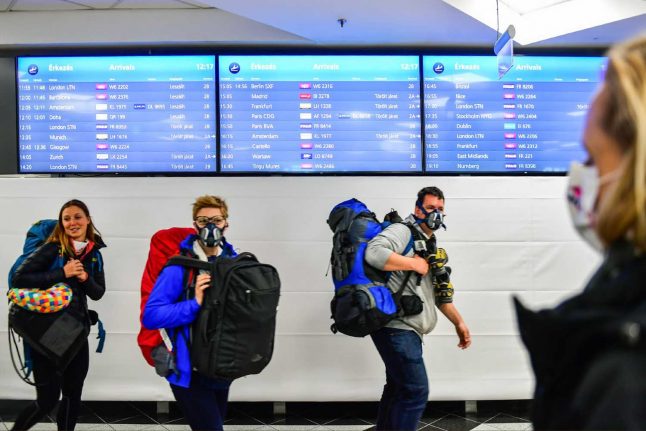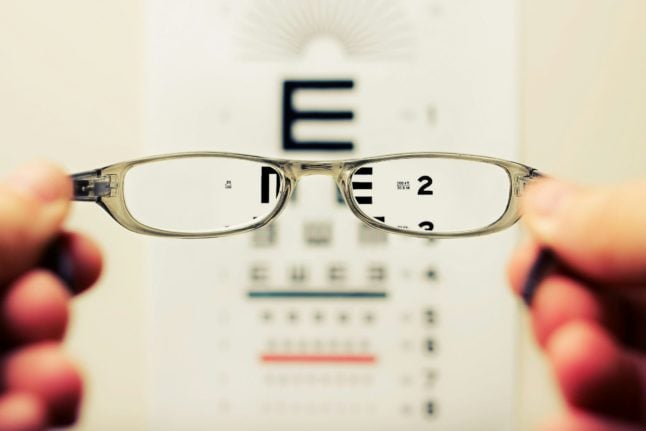This report has been updated on October 10th and is subject to change.
Throughout the pandemic, Switzerland slammed shut its borders – even those which had not been closed for more than half a century.
Only citizens, residents and cross-border workers were allowed to cross into Switzerland during the pandemic.
So who is allowed to enter Switzerland and under what circumstances? Unless you fit into the above three categories, that all depends on where you are arriving from.
EXPLAINED: Who can enter Switzerland right now?
While borders have again been allowed to open, arrivals from certain 'high risk' countries will need to quarantine for ten days on arrival in Switzerland.
Any country with more than 60 infections per 100,000 people over the previous 14 days is deemed high risk by the government and will be placed on the list.
The issue becomes more complicated with border countries. Countries which share a border with Switzerland will have specific regions placed on the list, rather than the entire country.
Which countries – and regions – are on Switzerland's 'high-risk' list?
Quarantine requirements will apply from certain high-risk areas from July 6th onwards. The list of countries is regularly updated by Swiss health authorities.
There are dozens of countries on the list, along with four border countries (France, Germany, Italy and Austria) where arrivals from certain regions must quarantine.
As at October 12th, the list includes dozens of countries or parts of countries: Albania, Andorra, Argentina, Armenia, Aruba, Austria (several regions), the Bahamas, Bahrain, Belgium, Belize, Bosnia and Herzegovina, Brazil, Cabo Verde, Canada, Colombia, Chile, Costa Rica, Croatia, Denmark, Ecuador, El Salvador, Eswatini, Faroe Islands, France (several regions), Georgia, Germany (Hamburg and Berlin), Gibraltar, Guam, Guatemala, Honduras, Hungary, Iceland, Iraq, Iran, Ireland, Israel, Italy (Campania, Liguria, Sardinia and Venice), Jamaica, Jordan, Kazakstan, Kyrgyzstan, Kuwait, Lebanon, Luxembourg, Maldives, Moldova, Monaco, Montenegro, Morocco, Nepal, the Netherlands, North Macedonia, Oman, Palestine, Panama, Peru, Portugal, Qatar, Romania, Russia, Sint Maarten, Slovakia, Slovenia, South Africa, Spain (not Canary Islands), Tunisia, Turks and Caicos Islands, Ukraine, the United Arab Emirates, United Kingdom and the United States.
Affected people will be informed on planes, coaches and at the borders, and must register with the local authorities once in Switzerland.
Anyone who appears to be sick must not be allowed to board buses, trains or flights to Switzerland.
READ MORE: UPDATED: Everything you need to know about Switzerland's quarantine requirement
How has this changed over time?
The initial quarantine list had 29 countries. As of end-September, that list is now at 66.
On August 20th, Spain's Balearic Islands, Belgium, Albania, Andorra, Aruba, Belize, Faroe Islands, Gibraltar, Guam, Monaco and Namibia were added to the list.
On the same day, Serbia, Singapore, Equatorial Guinea, Sao Tome and Principe and Saudi Arabia were removed.
From September 7th, people arriving in Switzerland from Croatia, Lebanon, Ukraine and the United Arab Emirates will have to go into mandatory 10-day quarantine.
Belgium and Mexico were removed from the list on September 7th.
On September 14th, people from nine regions in France and from the Austrian capital of Vienna are also required to quarantine. This was expanded to more regions at the end of September, along with Italy's Liguria.
Then on September 25th Switzerland announced that mandatory quarantine would be imposed on travellers arriving from 15 more countries, including Britain, Belgium and the Netherlands, due to their coronavirus infection rates.
The requirement also applied to seven other European countries — Denmark, Hungary, Iceland, Ireland, Luxembourg, Portugal and Slovenia — plus Ecuador, Jamaica, Morocco, Nepal and Oman.
From October 12th, Hamburg and Berlin in Germany, Burgenland and Salzburg in Austria and Campania, Sardinia and Venice in Italy were added.
In addition, the countries of Georgia, Iran, Jordan, Canada, Russia, Slovakia and Tunisia have been added to the list. Bolivia, the Dominican Republic, Namibia, Suriname and Trinidad and Tobago were removed from October 12th.
Editor's note: Please keep in mind that this article, as with all of our guides, are to provide assistance only. They are not intended to take the place of official legal advice.



 Please whitelist us to continue reading.
Please whitelist us to continue reading.
Member comments